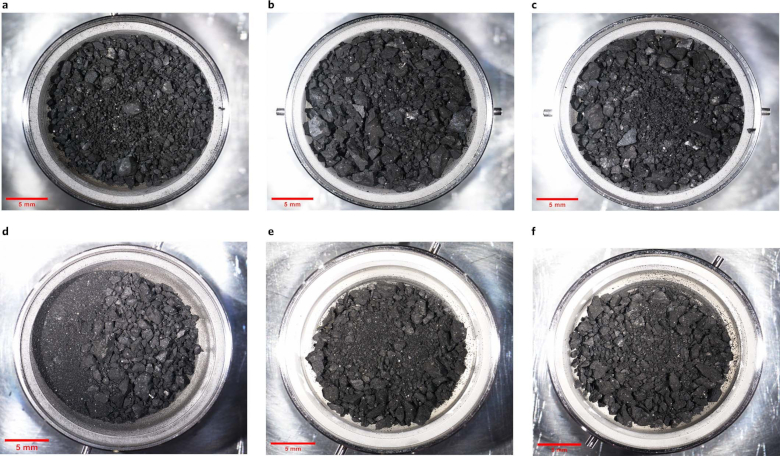Scientists have presented the first-ever analysis of samples retrieved from Ryugu, the large diamond shaped asteroid visited by Japan’s Hayabusa2 mission two years ago. Their results show that the near-Earth object is a pristine, very dark and very porous rock with volatile-rich species that likely originated from the outer Solar System. Overall, say the international teams of scientists behind the study, the Hayabusa2 returned samples appear to be among the most primordial materials available here on Earth for study.
Just over a year ago, samples collected by Hayabusa2 when it blew a hole in a kilometre-wide, rare c-type and b-type asteroid were delivered to Earth in a hermetically sealed container. It was the culmination of a journey which had begun in December in 2014.
Even before landing on Ryugu, scientists had already established from ground-based observations and measurements taken by Hayabusa2 during its mission that the ancient space rock was a rubble pile asteroid.
Rubble piles form when an asteroid or moon is smashed to pieces by an impact, and the shattered pieces subsequently fall back together, primarily due to self-gravitation. Many asteroids with low densities are thought to be rubble piles.
Shortly after the capsule had been collected, an early examination confirmed that the tubes contained gas, the first sample return of a material in the gas state from deep space. Now however, scientists have had chance to analyse the actual asteroid material.
The studies, published this week in Nature Astronomy are from two different teams working on different aspects of the samples. One team is headed by C. Pilorget at Université Paris-Saclay, in Orsay, France, the other is led by Toru Yada at the Japan Aerospace Exploration Agency (JAXA).
To understand the mineralogical and molecular characterisation of the samples, Pilorget and colleagues have used the MicrOmega hyperspectral microscope, which operates in the near-infrared range (0.99–3.65 µm).
According to their results, strong features at 2.7 µm (indicating their OH-rich content) and at 3.4 µm (diagnostic of the presence of organics) dominate at a global scale.
But, the team write in their research paper, “key distinctive signatures have been identified at a submillimetre scale. In particular, carbonates (a fraction of them enriched in iron) as well as NH-rich compounds have been detected.” The exact nature of the NH-rich compounds the team refer to are not known at this stage, but the team think they could include candidates such as NH4 phyllosilicates, NH4 hydrated salts and/or nitrogen-rich organics.
Not only do these volatile-rich species support Ryugu having preserved both pristine material and altered phases, say Pilorget and team, but after further study, they could provide new insights into the formation and evolution paths of planetary bodies in our Solar System.
“The samples constitute a uniquely precious collection, which may contribute to revisiting the paradigms of Solar System origin and evolution,” the team write in their paper.
Yada and colleagues on the other hand have been looking at the particle size distribution, along with density and porosity, spectral properties and textural properties. Their examination reveals that the Ryugu sample has sizes ranging from around 8 millimetres (mm), the largest average diameter, down to fine submillimetre dusts, with millimetre-scale particles being the most common.
From the average bulk density of particles, the team were able to infer that Ryugu has a porosity of 46 percent, which is highly porous; so much so that it is more porous than any carbonaceous meteorite that has been studied before.
As part of their research, the team also searched for Calcium–Aluminium-rich inclusions (CAIs) and chondrules.
CAIs are found in carbonaceous chondrite meteorites and contain high-temperature minerals. They are among the first solids condensed from the cooling protoplanetary disk which eventually became our Solar System.
Isotopic compositions of CAIs show that they underwent repeated melting events, whereas most chondrules are the product of a single melting event. They are also found in abundance in meteorites; in contrast CAIs make up less than 5 percent of meteoritic material.
Despite a thorough search, Yada and colleagues could find no trace of submillimetre CAIs or chondrules in the samples returned from Ryugu - neither could Pilorget and team. This, they say, when coupled with the porosity finding indicates “that Ryugu is most similar to CI chondrites but has lower albedo, higher porosity and more fragile characteristics.”
These studies are just the first round of purely non-destructive analyses, but with a total of 5.424 ± 0.217 grams of material collected from Ryugu, many further studies are expected.
Details of this research has been published in Nature Astronomy and can be found here and here.











